Sustainability in technology design and engineering: how engineers and simulation can help
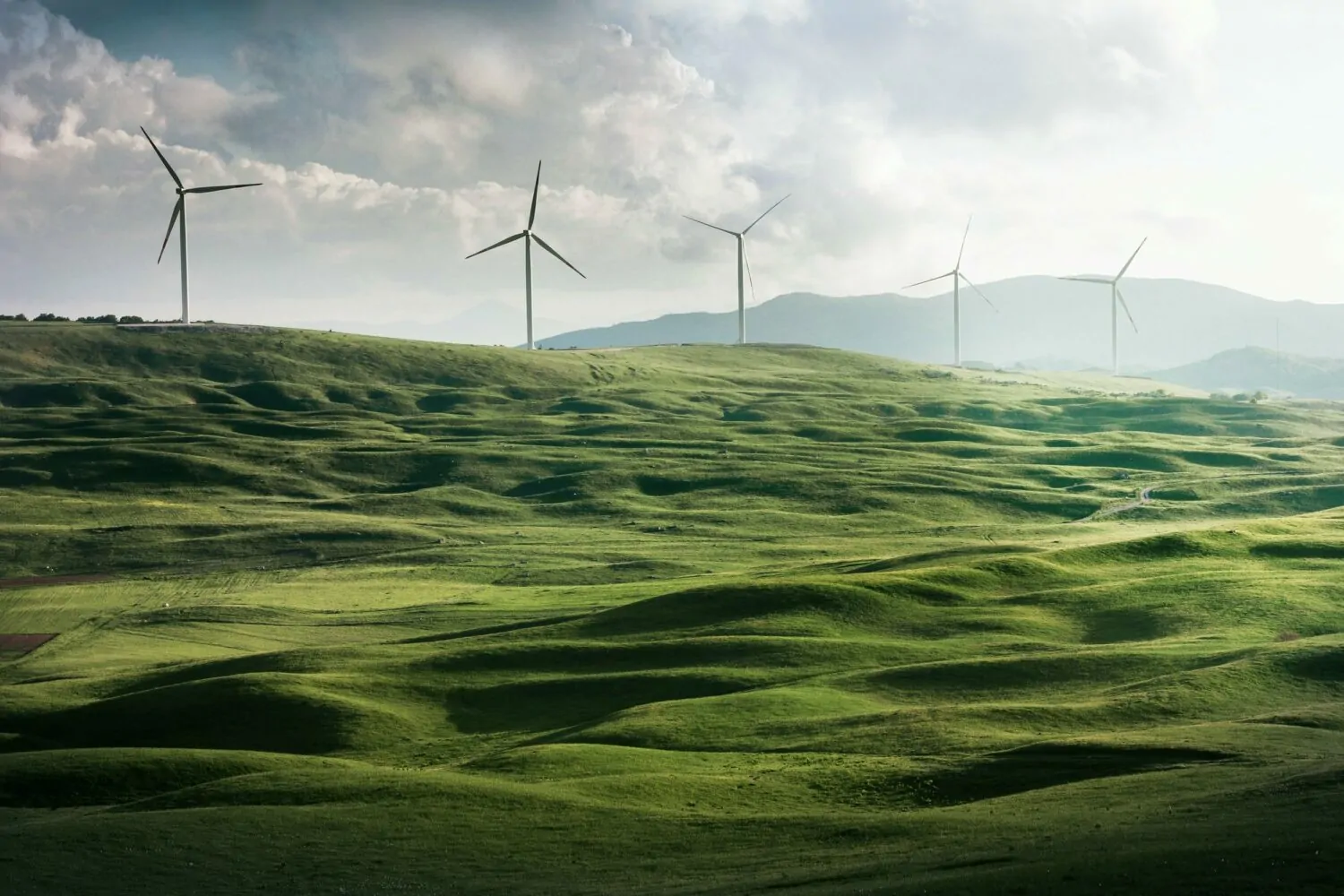
Here, we summarize the presenters’ talks and share their key ideas.
Dr. Marcelo Precoppe, Crop Postharvest Technologist – University of Greenwich
Technology can be sustainable in three ways: Economic, environmental, and social. Combining technology and sustainability in agriculture, for example, can improve people’s lives—a social benefit, especially for rural populations.
With what’s called “participatory technology development,” various stakeholders are involved in the development of a product, including the product’s users, manufacturers, and engineers. An open dialogue among all participants makes it easier to visualize, incorporate feedback, and try ideas. Simulation, especially particle simulation and the related multiphysics capabilities, are powerful tools in this process.
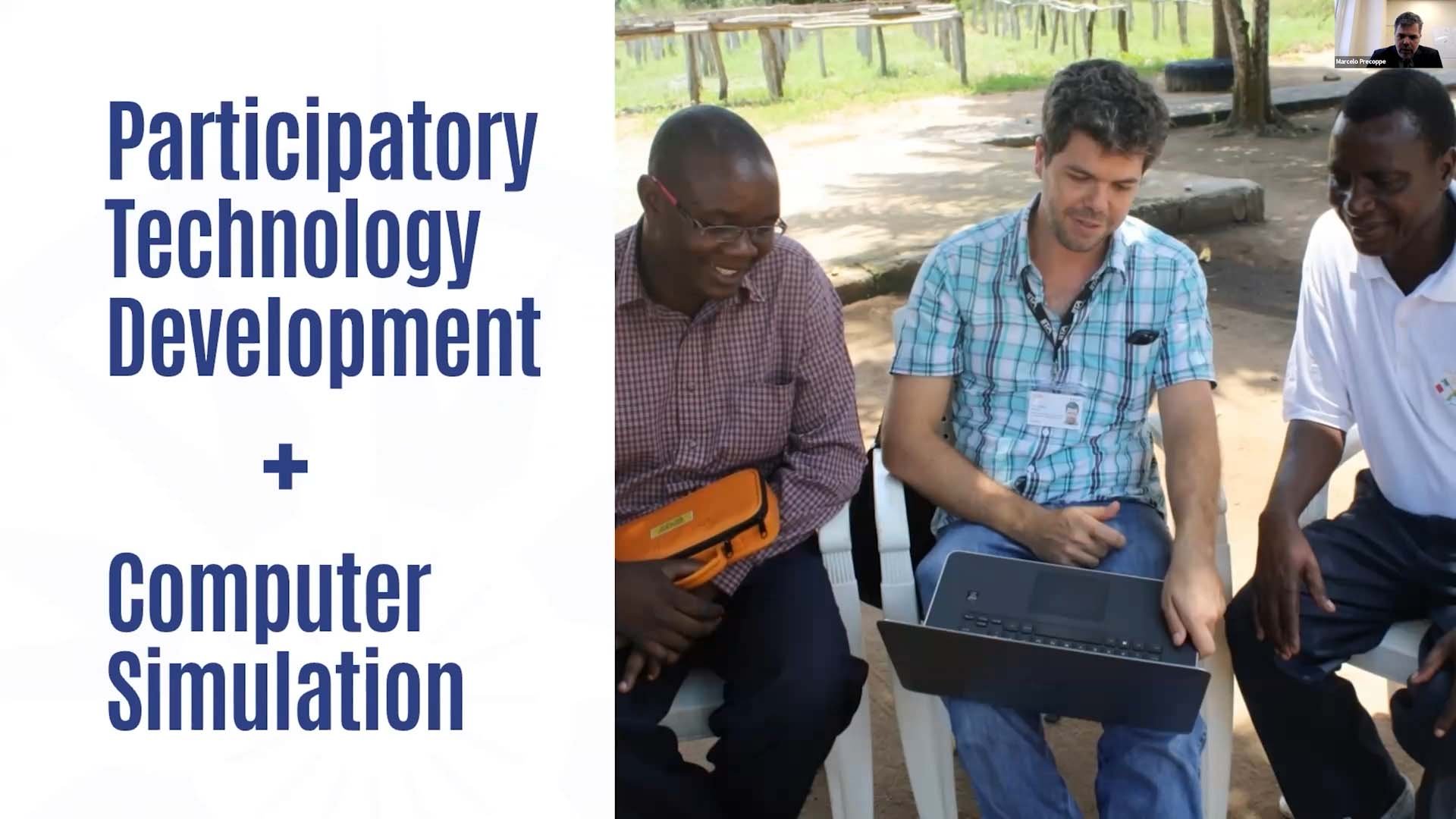
Dr. Precoppe described cassava processing as an example of this type of sustainable product development. Cassava is a key source of food, but the roots are highly perishable, and seven separate steps—including washing, grating, pulverizing, and milling—and several machines are needed to make cassava into flour. The existing processes are disjointed, expensive, and/or very inefficient. A single machine that can be understood and operated by many users is needed; specifically, a machine that can grate, pulverize, and mill the cassava would be a huge improvement and would help with concerns locally, combining technology and sustainability.
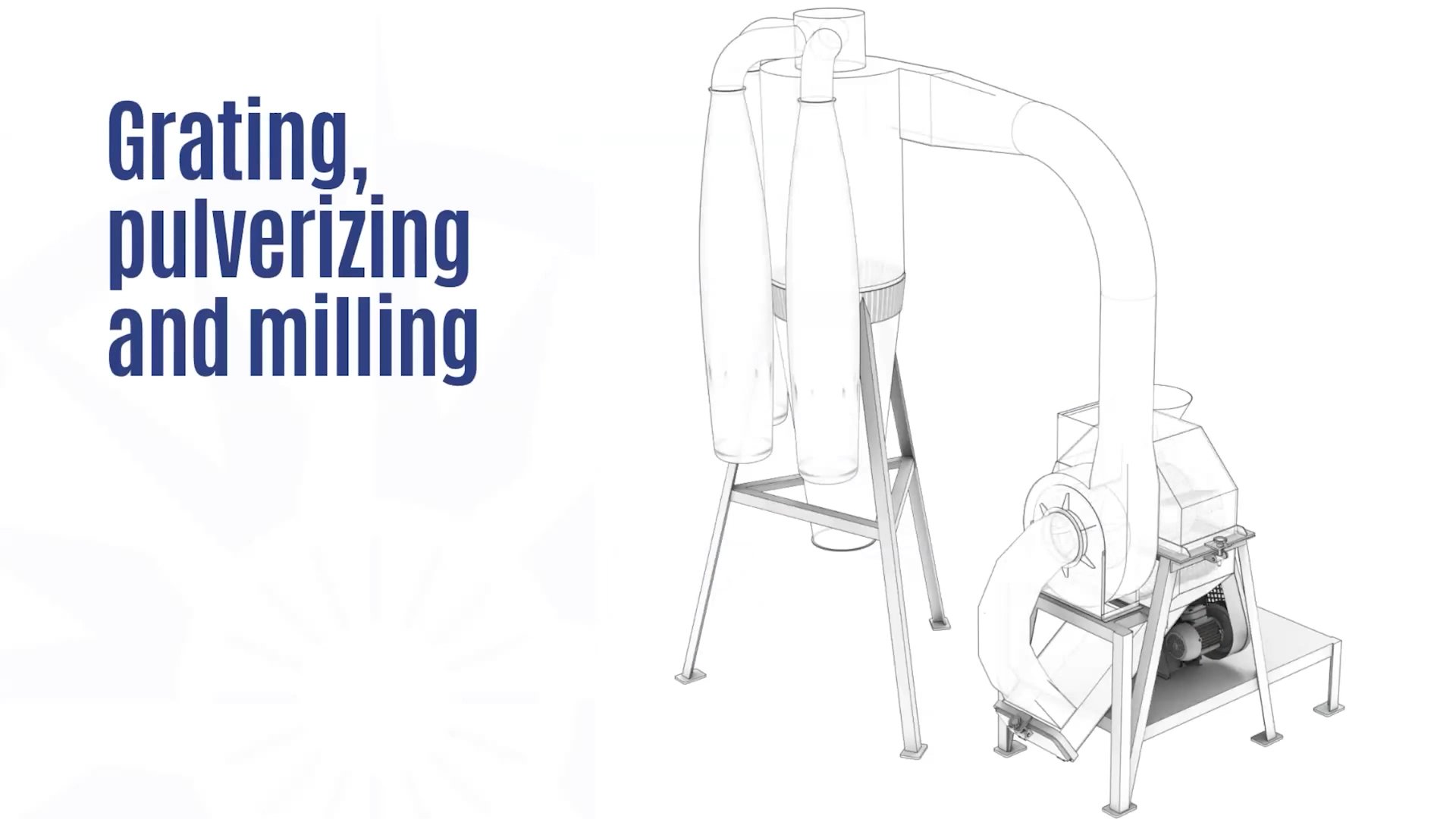
Combining three cassava processing machines into one piece of equipment boosted cassava processing efficiency and sustainability. DEM simulation was used to test ideas.
Using DEM coupled with CFD, a prototype was developed with a local shop and with feedback and involvement from local people in Ghana. The cassava dewatering press and a dryer were also improved. People working with cassava in Ghana can locally manufacture and repair the new equipment themselves.
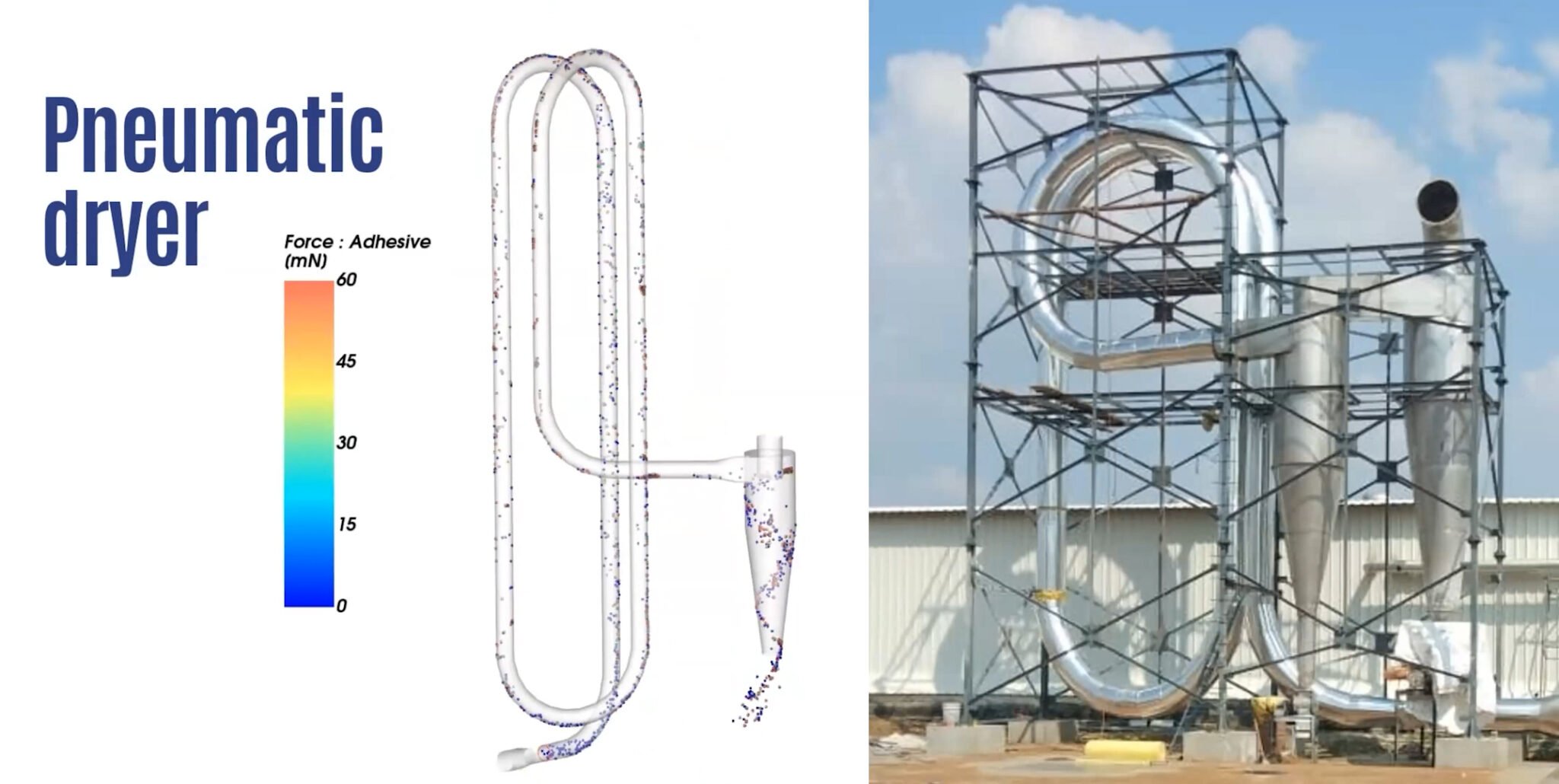
With feedback from people in Ghana who use and manufacture the equipment,
a pneumatic dryer for the cassava was improved.
Micael Boulet, Numerical Group Lead – Enerkem
Many of us believe it is possible to develop more products and processes that are more environmentally sustainable. While it is believed that fossil fuels contribute to global warming, these fuels and products are used in all kinds of items that we need every day. It is therefore important that we develop processes and materials to reduce the impact of human activities on the planet.
It makes sense to create biofuels and green renewable chemicals, Dr. Boulet explained. Sustainability can also come from improvements to the product life cycle, such as in raw material harvesting, processing, manufacturing, and distribution. The ultimate goal: Keep greenhouse gas emissions as low as possible.
Enerkem’s contribution is to recycle the non-recyclable, and in doing so, to solve two sustainability challenges: to develop better waste management and to reduce CO2 through decarbonization.
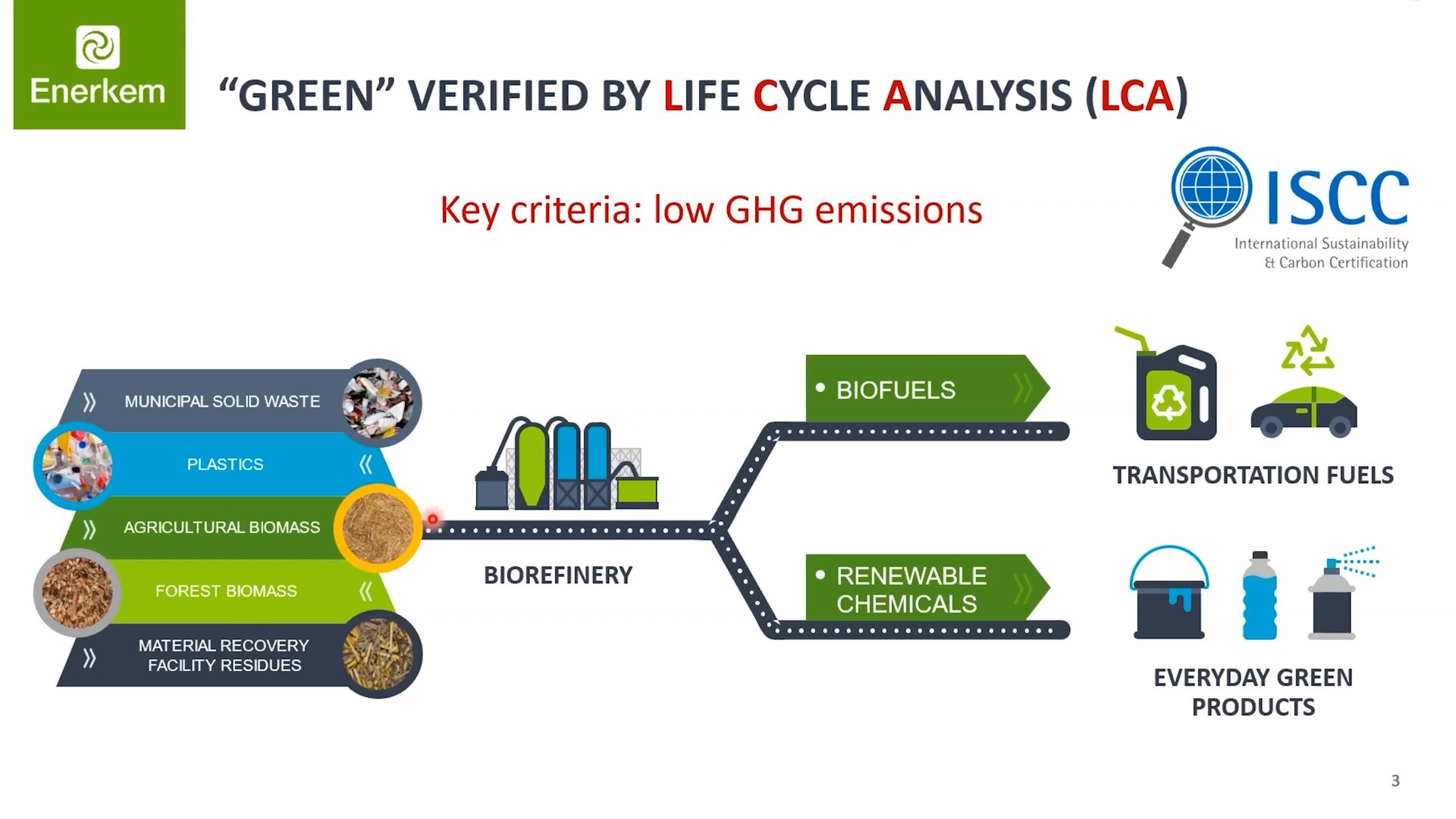
With Mechanical Biological Treatment (MBT), waste can be diverted from landfills. In addition to recycling and composting the diverted waste, refuse like cardboard, paper, and plastic can be turned into fuel.
Simulations were performed to learn about carbon recycling processes and optimize them. At Enerkem, they used simulation (Ansys Fluent combined with Rocky DEM) to optimize a fluidized bed reactor.
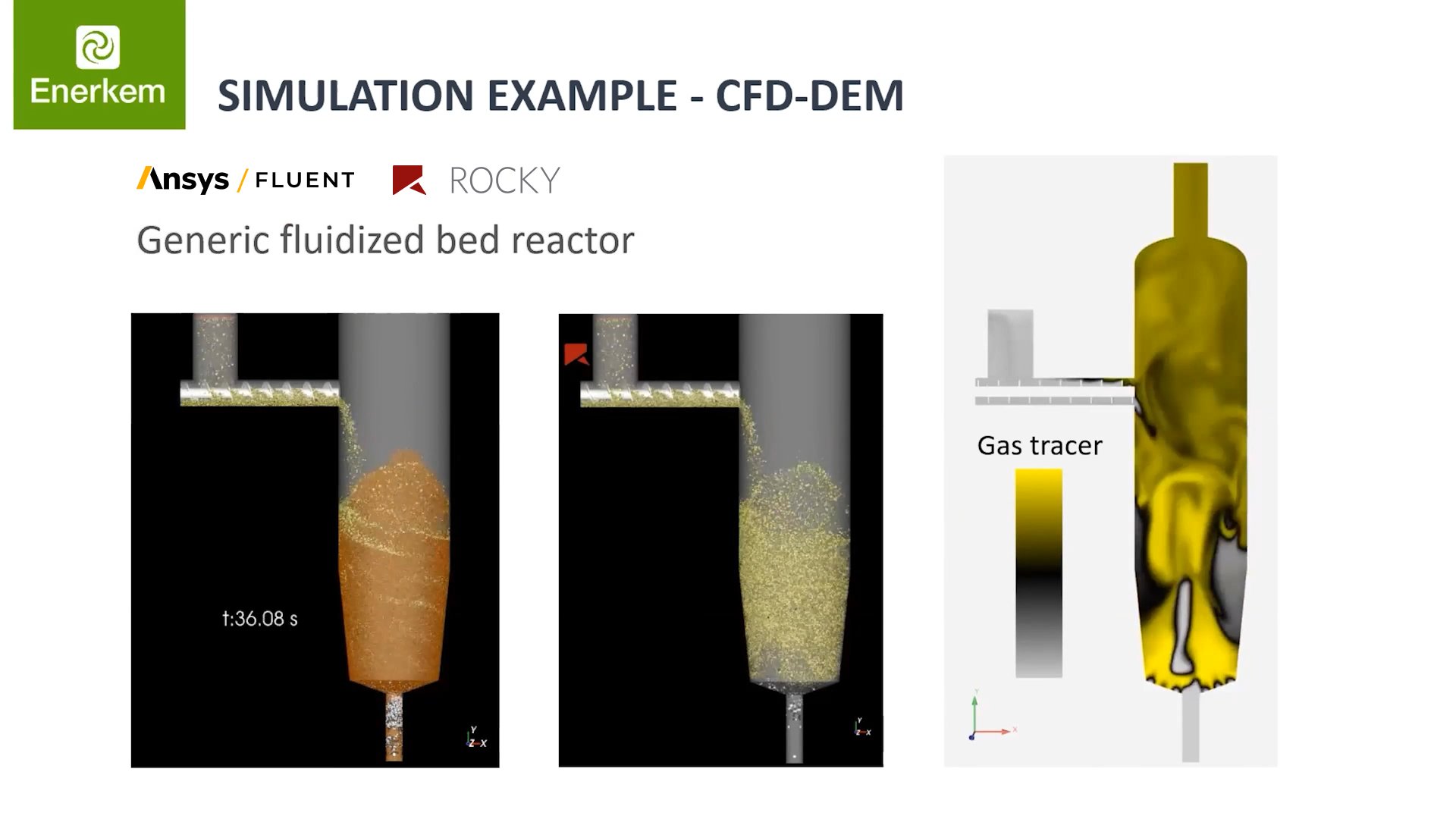
Also, via a proprietary MBT process, Enerkem uses gasification and syngas conditioning to produce H2 and CO, which are then transformed into fuels and other products. This isn’t just an abstract idea—it’s happening now at Enerkem’s first commercial MBT plant in Edmonton, Alberta, Canada. The plant has been certified by the International Sustainability & Carbon Certification (ISCC).
Dr. Jorge Ferreira, Rocky DEM Director, CADFEM GmbH
There is substantial opportunity in the building and construction industry to reuse and recycle many types of building materials. Germany alone consumes 100 billion tons of material and generates 218 million tons of waste a year, with only about 12.5% being part of the circularity (i.e., reused). Globally, the building industry’s material has just a 9% circularity rate.
A circular economy is important for all businesses, and it is especially important in the building industry. By increasing the material recycling rate, reducing the amount of raw material used, creating new processes, and optimizing unit operations, circularity can be improved in this industry, according to Dr. Ferreira. He noted that he’s defining recycling here as not just materials being reused, but being reused so that the quality of the recycled product remains the same, as opposed to “downcycling,” in which the recycled product is of lower quality or has less functionality.

Digital simulation tools have improved many industries, Dr. Ferreira noted, and simulation can benefit a circular economy in several ways, such as by analyzing and then optimizing each unit’s operation in materials processing. For example, simulation can examine the energy consumption and output of crushing machines in order to maximize the recycle rate. Simulation could also help maximize the capacity and reduce the blockage on a conveyor, which could improve equipment efficiency and also enhance the quality of the material to be recycled.
Involving all of a product’s stakeholders–users, engineers, and manufacturers–can help engineers design a product that’s sustainable and socially beneficial to local communities. CFD coupled with DEM simulation can allow engineers, with feedback from users, to design the best equipment for a given process, such as cassava processing machines.
Lowering greenhouse gas emissions is important to minimize climate change. Improvements to a product’s life cycle and processes can help with this goal, such as using Mechanical Biological Treatment (MBT) to convert waste to fuels and other products. Simulation can provide key insights to improve carbon recycling processes, for example.
Finally, embracing a circular economy can help minimize raw material use and maximize material recycling. The building industry offers many opportunities to do so: Simulation can analyze equipment to improve efficiency and the quality of the material to be recycled. Energy consumption and output can also be improved via insights gained via simulation tools.
Contact us today if you’d like help improving the sustainability and environmental impact of your products via simulation.
